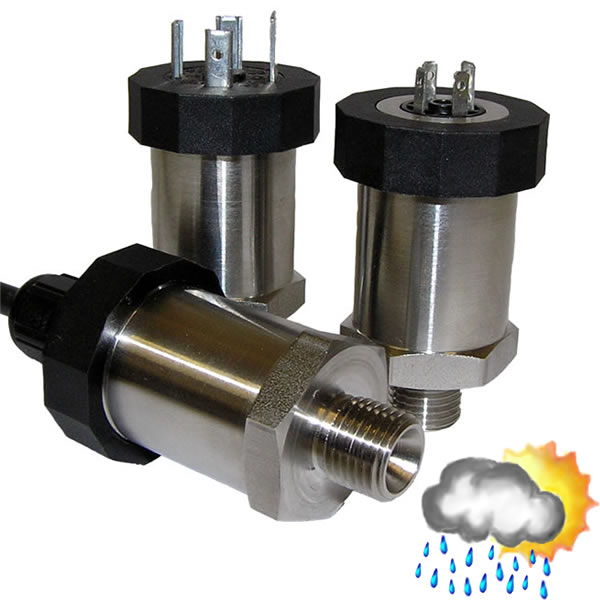Introduction

Image: appmeas.co.uk
Have you ever wondered why your weather station’s barometric pressure readings seem off? It could be an issue with the sensor itself. Barometric pressure sensors, essential for measuring atmospheric pressure and predicting weather conditions, can malfunction due to various factors such as dirt, moisture, or temperature fluctuations. Fixing a barometric pressure sensor is not always an easy task, but with the right knowledge and guidance, it can be done. In this comprehensive guide, we will delve into the intricacies of barometric pressure sensors, help you identify potential issues, and provide step-by-step instructions for repairing them.
Understanding Barometric Pressure Sensors
Barometric pressure sensors, also known as pressure transducers, measure the weight of the air column above them, providing an indication of atmospheric pressure. Different types of sensors utilize various technologies, including capacitive, piezoresistive, and optical. Each technology has its strengths and weaknesses, suitable for specific applications. However, understanding the general principles of operation can enhance your troubleshooting capabilities.
- Capacitive Sensors: These sensors measure the capacitance between two conductive plates. As the atmospheric pressure changes, the plates flex, altering their capacitance, which is directly proportional to the pressure.
- Piezoresistive Sensors: Piezoresistive barometric pressure sensors use silicon diaphragms with implanted resistors. Pressure variations cause the diaphragm to deflect, changing the resistance of the resistors. This change in resistance can be precisely converted into pressure readings.
- Optical Sensors: Optical barometric sensors employ a light source and a detector. As pressure changes, the refractive index of the surrounding air changes, affecting the amount of light reaching the detector. This deviation in light intensity can be correlated to pressure variations.
Causes of Barometric Pressure Sensor Malfunctions
- Dirt and Debris: Dust and dirt particles can accumulate on the sensor diaphragm or other sensitive components, affecting their performance.
- Moisture: Excess moisture or condensation inside the sensor can damage electronic circuits and cause sensor inaccuracies.
- Temperature Fluctuations: Extreme temperature variations can affect the sensor’s calibration.
- Physical Damage: Accidental bumps or shocks can dislodge the sensor or damage delicate internal components.
- Aging: Over time, sensors may experience gradual degradation of performance due to wear and tear.
Step-by-Step Repair Guide
Fixing barometric pressure sensors involves careful handling and precise techniques. The following steps will guide you through the repair process:
- Safety First: Ensure the power supply to the weather station is disconnected before starting any repairs.
- Access the Sensor: Open the weather station housing and locate the barometric pressure sensor. It is typically a small, cylindrical or rectangular component with a diaphragm or other sensing element exposed.
- Clean the Sensor: Gently use a soft brush or compressed air to remove any visible dirt or debris from the sensor diaphragm and surrounding areas. Do not apply excessive force that could damage the sensor.
- Inspect for Moisture: Check for condensation or water droplets inside the sensor or its housing. If present, allow the sensor to thoroughly dry before reassembling it.
- Reassemble the Sensor: Carefully place the sensor back into its proper position and tighten any screws or connectors securely.
- Calibrate the Sensor: Once the sensor is reassembled, use the manufacturer’s calibration procedure to ensure accurate readings. This may involve adjusting a potentiometer or entering a calibration code. Follow the instructions provided by the manufacturer.
Expert Insights
- “Regular maintenance, including cleaning and calibration, can prolong the lifespan and performance of a barometric pressure sensor,” says Dr. Mark Robinson, a leading researcher at the National Institute of Standards and Technology.
- “If the sensor malfunction persists after cleaning and calibration, it may be necessary to replace the sensor with a new one,” suggests Professor Emily Carter of the Massachusetts Institute of Technology.
Conclusion
Fixing barometric pressure sensors can be a challenging task, but by following the steps outlined in this guide, you can effectively restore their accuracy and ensure precise weather measurements. Remember to prioritize safety, handle the sensor with care, and consult manufacturer instructions when necessary. With a well-maintained and calibrated barometric pressure sensor, you can confidently predict weather conditions and enjoy peace of mind knowing your measurements are reliable.

Image: www.felixenviro.ca
How To Fix Barometric Pressure Sensor